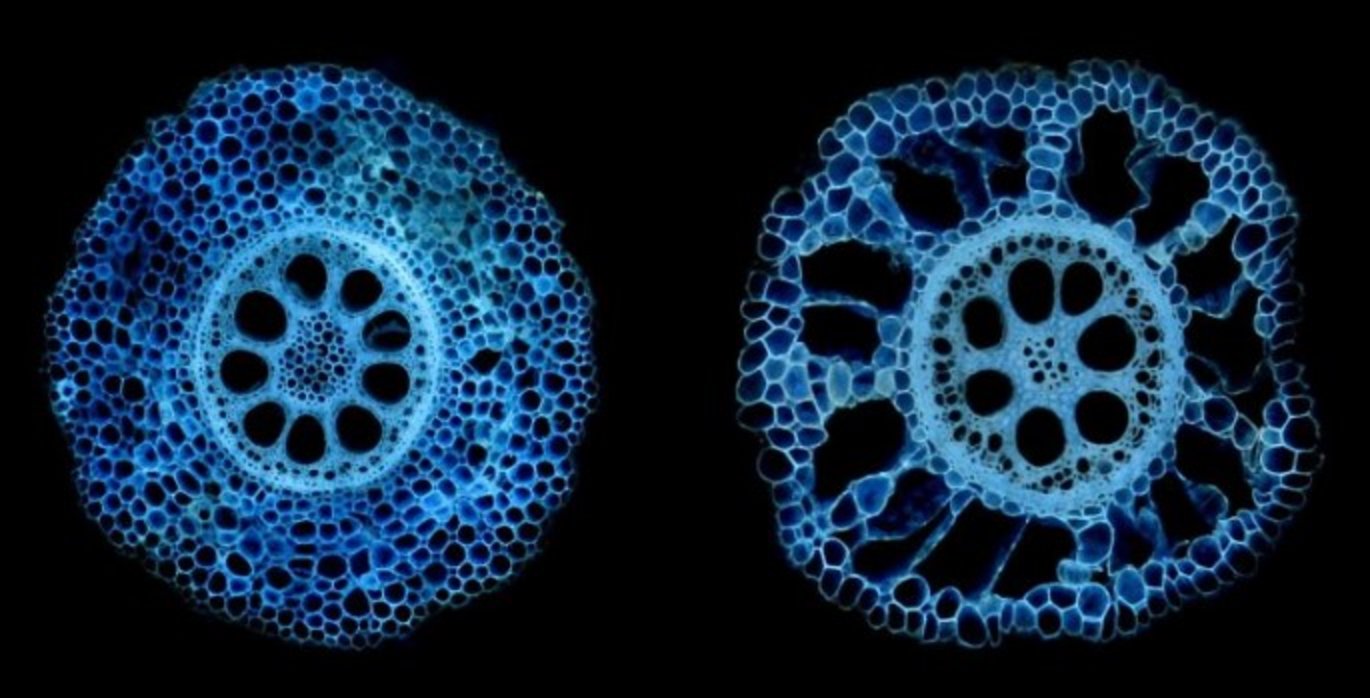New gene found in maize helps to capture more water and nutrients
The more air volumes in the roots of maize, the more efficient the plant can capture and use water and nutrients. The result is a potentially higher yield.

March 23, 2023
The more air volumes in the roots of maize, the more efficient the plant can capture and use water and nutrients. The result is a potentially higher yield. Hannah Schneider, an assistant professor at the Crop Systems Analysis group, discovered a gene called ZmbHLH121. This gene regulates the formation of those air volumes in the roots. Last week, she published her results in the scientific journal PNAS.
The new gene ZmbHLH121 regulates the formation of air volumes in the roots of plants, also known as root cortical aerenchyma. Such spots exclusively consist of air and do not contain plant tissue. They offer a clear advantage to the growth of the plant, Schneider explains. ‘Air volumes make roots metabolically cheaper, because they replace living root tissue with air. The resulting metabolic savings can be used to grow more roots deeper into the soil to capture more water and nutrients, or grow more shoots or leaves.’
Despite knowledge on the role of aerenchyma in resource use and, subsequently, plant growth, this trait has received little attention as a selection criterium in plant breeding, because to date it was quite difficult to study the inside of roots of mature plants in the field. For her research, Schneider used a new imaging technique called Laser Ablation Tomography, combined with image analysis software. These techniques reveal how a gene controls what the plant looks like and how it functions.
Food security and climate change
A better understanding of the genetic control of root traits promises to accelerate the breeding of crops with greater yields, which is important for several reasons. ‘The growing world population needs high-yield crops to produce enough food’, says Schneider. ‘Moreover, climate change and regulations on the use of fertiliser require the development of resilient crops that grow better with less water and fewer nutrients.’
Worldwide, maize is grown as a staple crop for food and feed production, so optimising yields would increase food security for many people. Schneider’s findings are not only important for the production of maize. ‘The gene has been discovered, confirmed and validated in maize, but these findings could be transferred to other species, like wheat, barley and rice.’
Farming dry and infertile soils
Schneider and her colleagues will continue investigating this gene and its other functions in plants. ‘This genetic tool can be directly incorporated in breeding programmes to produce plants with increased aerenchyma formation that potentially are more productive in dry and infertile soils.’
For more information, please click here and use the contact form for questions or get more information about Dr. HM (Hannah) Schneider